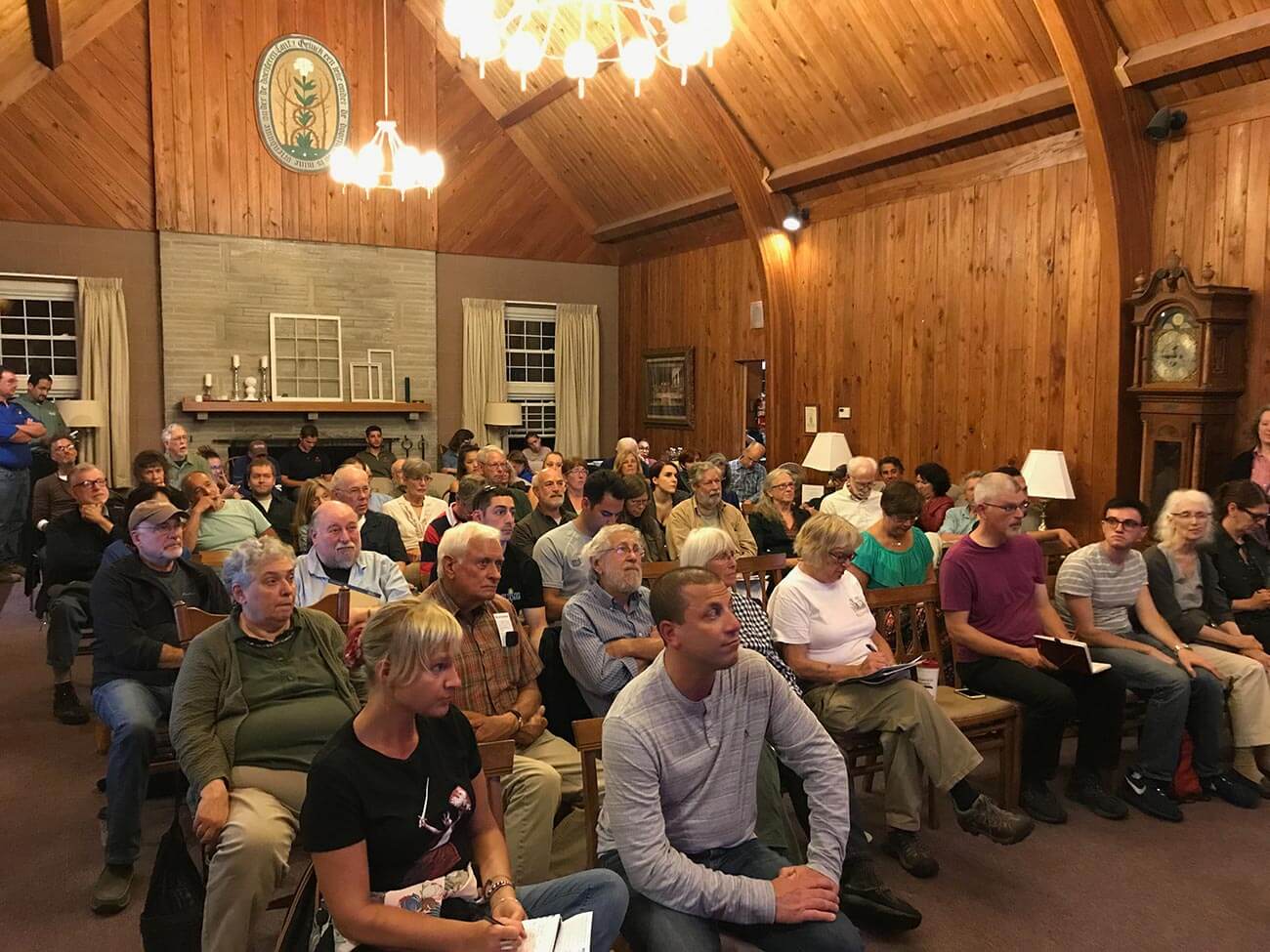Jay Egg: New York Needs Geothermal to Achieve its 2030 Climate Goals

Geothermal expert Jay Egg this week kicked off his three-month tour of New York state with a packed, hourlong Q&A session in New Paltz. Some 80 people squeezed into a large meeting hall at the New Paltz Reformed Church on Tuesday to get a detailed primer on renewable heating and air conditioning.
Heating and air conditioning consume more than half of a home’s monthly energy needs. Combustion-based heating systems, those powered by oil, propane and natural gas, are a significant source of greenhouse gas emissions.
In 2015, New York Gov. Andrew Cuomo laid out an energy plan that promised to reduce greenhouse gas emissions across the state by 40 percent from their levels in 1990 by the year 2030.
“We cannot do that with combustion heating,” Egg said. “You can’t reach these goals without replacing combustion heating.”
Most people still have no idea there’s a safe, affordable, eco-friendly alternative to traditional heating and air conditioning systems, Egg said. When the average homeowner decides to “go green,” they typically invest in better insulation, install solar panels and buy an electric car. Investing in the last piece of the puzzle, renewable heating and air conditioning, is crucial to truly reducing your home’s carbon footprint, he said.
Geothermal systems use the ambient temperature of the Earth to generate a year-round supply of renewable heating and air conditioning. The system requires a dedicated appliance called a ground source heat pump, which runs on technology more commonly found in kitchen refrigerators.
In his presentation, Egg described a number of successful geothermal projects he’s helped design.
In 2012, the Florida chapter of the Sierra Club moved its operations into the state’s first “net zero” commercial building, in St. Petersburg. The building’s heating and air conditioning are handled by a geothermal heat pump, and its electricity needs are generated onsite, using rooftop solar panels.
Last year, Egg checked in with the chapter’s senior organizing manager, who said they were “extremely happy” with the building’s geothermal HVAC system four years after installing it.
It’s estimated some 50,000 geothermal heat pumps are installed in the U.S. each year.
In New York’s Hudson Valley, successful examples include Bard College’s 107,000-square-foot, Frank Gehry-designed Fisher Center in Red Hook, and geothermal heat pumps at the 405-acre SUNY Sullivan campus in Loch Sheldrake. Several hundred local homeowners have installed smaller geothermal systems at home.
Egg’s tour continues with stops in Westchester County, New York City, Long Island, Buffalo, Rochester and Syracuse through mid-November.
The event this week included a number of Hudson Valley-based solar and geothermal installers, including Dandelion, which met a New Paltz homeowner who signed an installation contract with the company days later.
- Thinking About Adding Central AC? Read About Geothermal First.
- Dandelion Energy Celebrates New Tax Credit for New York Homeowners Who Install Geothermal Systems
- Geothermal Pros & Cons: Is Geothermal Right For You?
- All You Need to Know About Home Geothermal Heating & Cooling
- The Power of Geothermal and Solar Together


